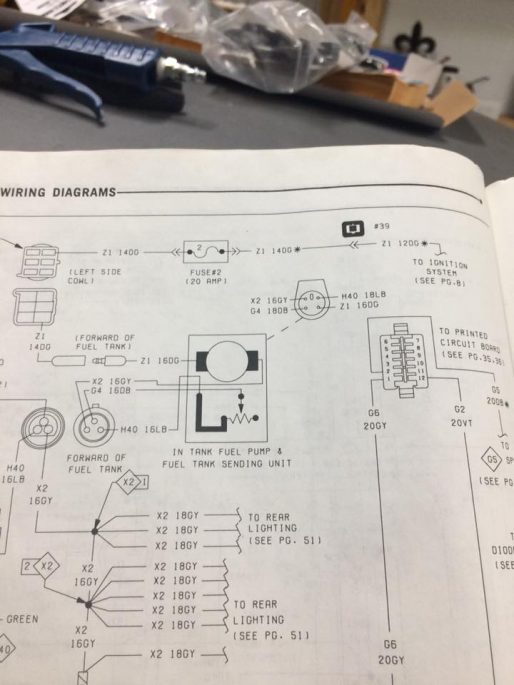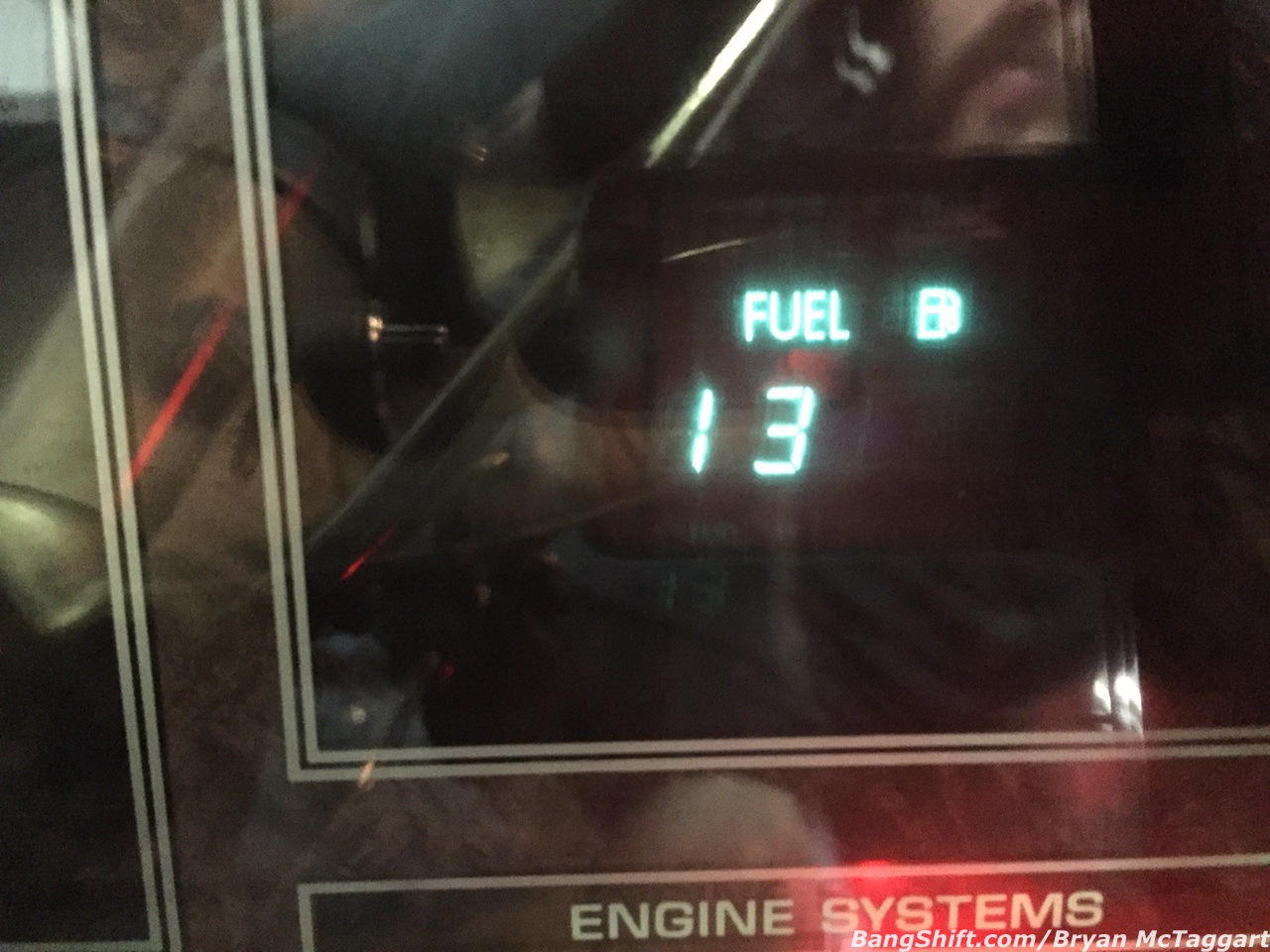Remember my first day on the job nearly four years ago, when I said that joining the BangShift crew might be the most questionable automotive decision I’ve ever made? Scratch that. I’ve gone above and beyond that mark with the silver brick in my garage. The Imperial’s second build has had a month off while I’ve dealt with some issues, but the project itself is being fought on two fronts: running gear, which was seen on the last couple of updates (and is on pause while I wait for certain tools to come in so I can continue on properly) and wiring, which I’ve touched on as well, but only in minor detail. The underhood wiring situation prior to the renewed build was somewhere between “stock” and “horrific”. Mike Finnegan happily referred to the wiring near the bulkhead connector as “attacked by a prianha”, and there were tons of loose connectors going nowhere that were relics of the original fuel injection system that I…um…set on fire twice back in 2012. So, with a background in aviation wiring and electronics supporting an ego that kept screaming “You can do eet!” like Rob Schneider was in the garage with me, I decided to try to repair 1980s Chrysler wiring.
Kids, if you somehow find yourself at that same decision in your life, do yourself a favor. Go slap a cactus, it’ll be less painful.
Most of the wiring work has simply involved removing the relay power connections. That hasn’t been too bad. Taking the Chrysler power lead “connections” and re-engineering them to be more reliable has eaten up some of the work and I’ll touch on that once they are finished. But for now, let’s focus on the one problem that actually has a few people stumped: the fuel gauge. The problem with my specific Imperial is two-fold:
- My car was an EFI car until 2012. It had never been converted via a factory kit, and the only reasons why the EFI system was removed were two-fold: the EFI-specific fuel tank setup was rotted through and the two times I turned the EFI plate into an impromptu wok cooked the electronics.
- Even if I somehow found a carburetor conversion kit for a J-body Imperial, I would be replacing: engine wiring harness, fuel tank, intake manifold for a standard 1980s 318 unit, retrofitting a 2-bbl carburetor and a Lean Burn setup onto the engine, and replacing the entire gauge cluster for a carburetor-style system.
When I first got the car running, it worked off of fuel tank that I pulled from my 1981 Dodge Mirada and was sparked via an MSD box. Everything worked fine minus the fuel gauge, but it wasn’t completely hopeless: the readout always said “full” even though that wasn’t the case, and when it said “14”, you considered that a low fuel light and hit the gas station. I never ran the car out of gas. But I wanted the gauge to function, and that’s where the fun has come in, and it’s narrowed down to one point: a green wire at the fuel tank connector that boldly goes nowhere on a non-EFI car. 
What is known is that it goes to the fuel pump for both EFI and non-EFI cars. What isn’t known is it’s actual function. So, after discussions with a guy who works on these cars more than I do, we both found ourselves absolutely stumped. Testing was in order. My first test: power-on…positive lead to wire, negative grounded. This turned the gauge readout into some kind of redneck’d voltmeter, and I discovered that by opening the door, which turns on all of the interior lights, and watching the fuel gauge pancake as the jump box putting power into the main system was draining. Second option: grounding. With no power applied to that wire, grounding it out has produced a very randomized lottery of information. To blank out the system, you cut the main power supply, wait a ten-count, then reapply power. Every power cycle, I got new information, ranging from “FULL” on a tank that had been filled up only with five gallons of fresh gasoline to “2 (Low Fuel)” with the same amount of fuel in the tank. Awesome…and useless. 
Round three involved a parts-store fuel pump. Ok, let’s see what happens as the fuel is being drained out…I should see some activity with the gauge, right? Nope. With my wife watching the readout like a hawk, the five gallons of gas was pumped out of the tank and the gauge didn’t blink.
So, there is a difference between power and grounded, but nothing functions properly. The fuel gauge has become even more unreliable than before. And I’ve checked…I haven’t removed a relay that affected fuel readout. This means that I’m going to the parts store in the morning to inspect a setup that’s not in a tank…I’m pretty sure that something will break if I try to remove the sending unit out of the tank, the Imperial’s original unit tore out while trying to loosen the lock. This also means that I’m now officially over my head and can use your inputs. No, burning the car down does not count as an “input”. I doubt that there are any more sick freaks out there who build these cars, but maybe you can see something that I don’t or have knowledge I can use. I don’t want to throw in the towel on this yet.

























Well it’s not like you a doing a 100 point restoration for Pebble Beach Bryan, I would just discretely add an aftermarket fuel gauge to the dash and forget about the factory one. Life is too short.
What he Said. A new digital fuelgauge and wiring and you will be laughing, and can use your time on something more fun.
What they both said. Why fight it?
Kudos for staying on the case…
Trying to identify what is a known “good” part will help isolate variables.
So if you were to put a spare gas tank float-sending unit(assuming they are the same carb or EFI on the stock wiring at the tank, that would eliminate that end of the question… Then you are down to wiring, or the dash readout… (I am thinking the readout)
check the ohm reading full/empty with a multi meter,it sounds like your sender and gauge are incompatible, most mopars are 80-10 ohms, some later efi senders changed to 10-180 ohms (VDO)
and if you could find a rheostat to put inline with that wire it might tell you something about what amount of power the gauge expects to see.
Also, measuring resistance across the gauge hookups seems like a neat idea, just in case it really didn’t like 12vdc.